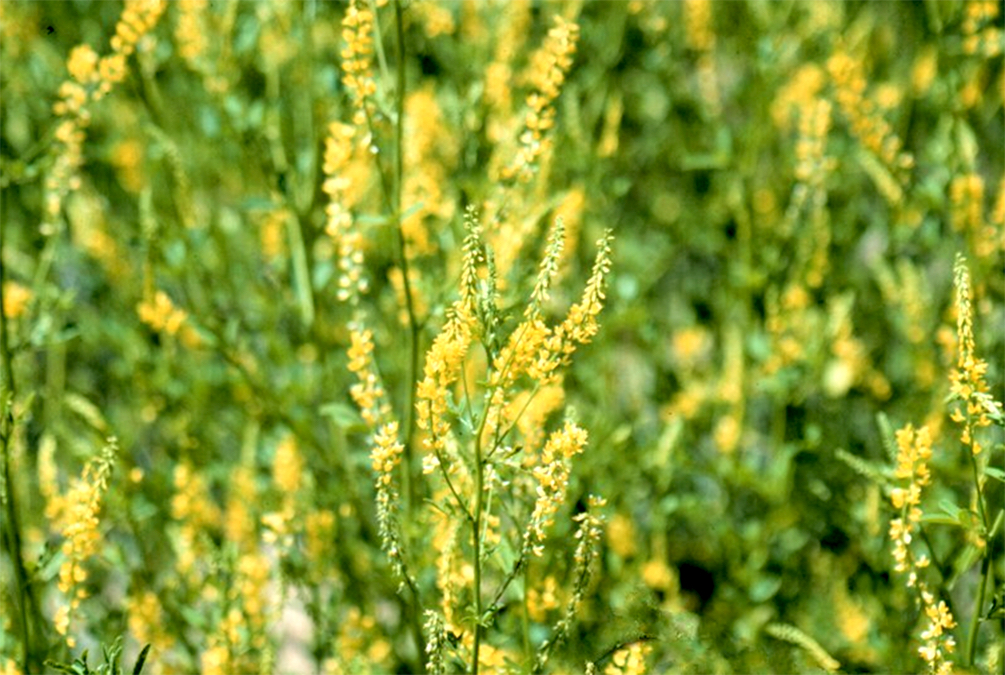Rachael Brooke, Phillips-Rooks District Extension Agent Agriculture and Natural Resources
Yellow Sweet Clover Poisoning
Sweet clover is in abundance this year. As a grazing resource, sweet clover can be excellent feed. However, there are a few problems associated with yellow sweet clover that producers should keep in mind.
Sweet clover is a legume so it can cause bloat. Most of the time in this region, sweet clover is part of a diversity of grasses, sedges, legumes and forbs on rangeland or pasture and doesn’t result in bloat. As ruminants, cattle can adapt to grazing forage with high bloat potential over a period of several days. Where problems occur is usually when cattle are hungry and turned into a pasture where sweet clover is immature and in abundance. Wet or moist conditions can also seem to trigger a bloat event.
It appears that some animals within a herd are much more prone to bloat than others. Unfortunately, there is no way to identify ahead of time which animals are more bloat prone. Providing a supplement with an ionophore such as Rumensin® as well as the use of poloxalene (Bloatguard®) several days before turning cattle into pasture with legumes can help reduce the risk of bloat.
Another challenge sweet clover presents, is when it is harvested for hay or silage. Sweet clover contains a compound called coumarol that can be converted to dicoumarol in the presence of molds. When dicoumarol is consumed by livestock it inhibits vitamin K production. Vitamin K is needed as part of the process for blood to clot. When vitamin K is inhibited, cattle can essentially bleed to death internally. Cattle fed hay with moldy sweet clover could be consuming the toxin dicoumarol.
Unfortunately, it doesn’t take much dicourmarol to cause a problem. Hay containing greater than 10 parts per million of dicoumarol should be fed with caution. All cattle are susceptible, but younger cattle seem to be more susceptible than mature cows. Pregnant cows may abort or give birth to stillborn calves if they are consuming moldy sweet clover hay.
From a management standpoint, here are options to consider for minimizing the risk of feeding hay with sweet clover. 1) Hay containing sweet clover should be thoroughly dry before baling. Sweet clover stems can be quite large and hard to get to dry. Tight, dense bales that are damp can make the problem worse as mold formation will be greater at the core of the bale. 2) Consider cutting around areas that are heavily populated by sweet clover or waiting to harvest hay till the sweet clover plant has fully matured and begun to dry down. 3) Alternate feeding hay with sweet clover in it with other feeds. A recommended strategy is to feed hay with sweet clover for two weeks and then feed safe forage for two weeks. At the end of the two weeks then begin the rotation again. This intermittent feeding strategy is safer than mixing safe forage with moldy sweet clover hay. 4) Do not feed sweet clover hay within 3 weeks prior to the start of calving or before any surgical procedures like castration or dehorning. 5) Consider having hay tested for dicoumarol. The challenge with this is that it can be difficult to get a good representative sample of moldy hay.
Sweet clover is an opportunistic plant that takes advantage of good growing conditions when they are available. In grazing situations, it can be a good feed resource. When harvesting as hay, use caution in both putting it up and feeding it. Moldy sweet clover hay can be toxic.
For more information, please contact the local K-State Research and Extension Office.
K-State Research and Extension is an equal opportunity provider and employer.




